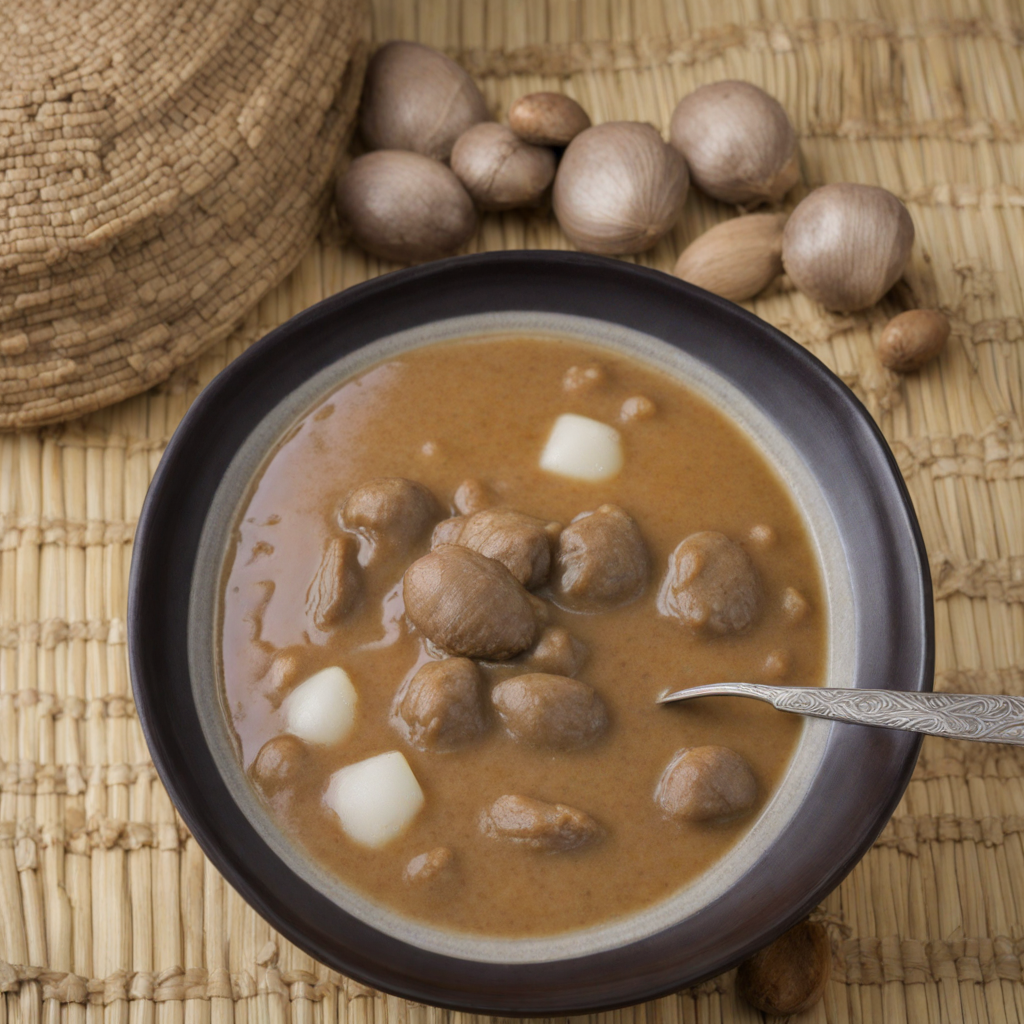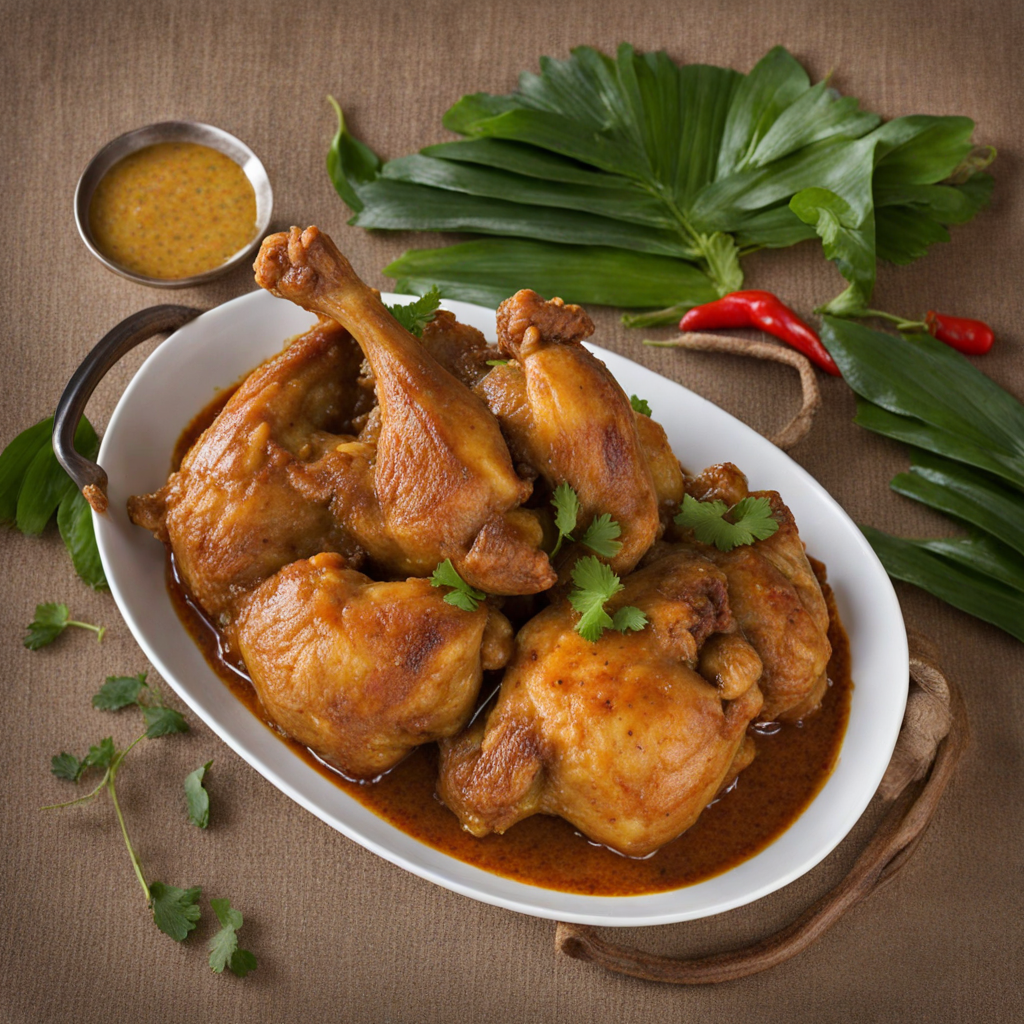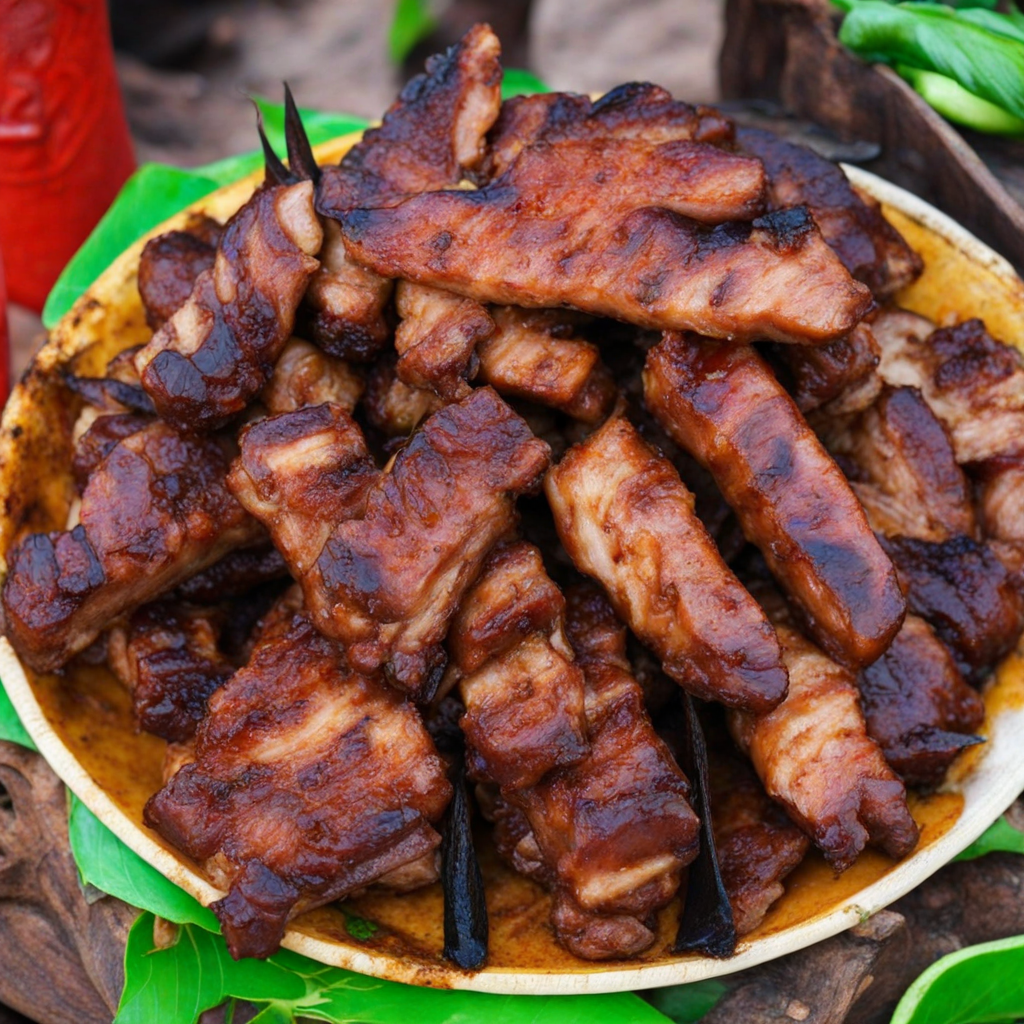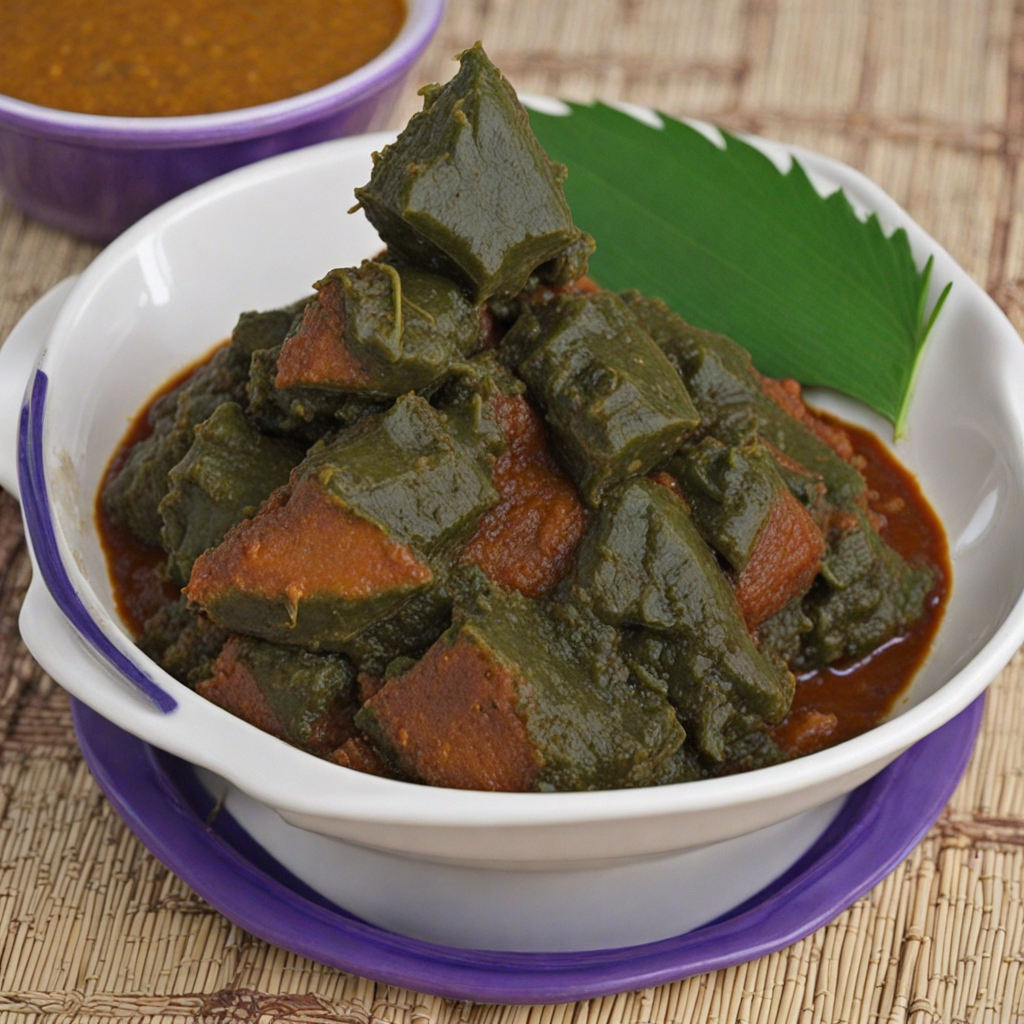Liboke
Liboke is a traditional Congolese dish that encapsulates the vibrant flavors and culinary heritage of the Democratic Republic of the Congo. This dish is primarily made with fish, chicken, or other proteins that are marinated in a rich blend of spices, including garlic, ginger, and local herbs. The key element of Liboke is its unique preparation method, where the marinated protein is wrapped in banana leaves and then steamed or grilled. This wrapping technique not only locks in moisture and flavor but also imparts a subtle earthy aroma from the banana leaves, making every bite a delightful experience. What sets Liboke apart is the use of local ingredients that reflect the region's agricultural bounty. Often, the dish is accompanied by a sauce made from groundnuts (peanuts) or palm oil, which adds a creamy texture and nutty flavor that beautifully complements the protein. Vegetables such as cassava leaves or eggplant are commonly included, enhancing the nutritional profile and providing an additional layer of flavor. The combination of spices, the richness of the sauce, and the freshness of the ingredients create a harmonious balance that is both satisfying and invigorating. Eating Liboke is not just about the food; it’s an experience that connects you to the culture and traditions of the Congolese people. Typically served with a side of rice or plantains, it is often enjoyed as part of a communal meal, where family and friends gather to share stories and laughter. The dish embodies the spirit of togetherness, making it a must-try for anyone looking to explore authentic Congolese cuisine. With its robust flavors and captivating aromas, Liboke invites adventurous eaters to savor a taste of the Congo.
How It Became This Dish
Liboke: A Culinary Heritage of the Democratic Republic of the Congo Liboke, a traditional dish from the Democratic Republic of the Congo (DRC), is a captivating culinary gem that reflects the rich cultural tapestry and vibrant history of the region. This dish, often prepared using fish or meat, is wrapped in banana leaves and cooked over an open flame or steamed, yielding a unique blend of flavors and aromas that speak to the heart of Congolese cuisine. Origins of Liboke The origins of Liboke can be traced back to the indigenous peoples of the Congo Basin, who have inhabited the region for millennia. The DRC is home to an array of ethnic groups, each with its own unique culinary practices, but the tradition of wrapping food in leaves likely emerged from a practical need to preserve and cook food using the natural resources available in the dense rainforests and riverine environments. Banana trees are abundant in the region, and their leaves provide an ideal, biodegradable wrapping for cooking. Liboke is believed to have been a staple among fishing communities along the Congo River. These communities relied heavily on the river’s rich biodiversity, using its resources for sustenance and trade. The method of wrapping fish or meat in banana leaves not only enhanced the flavors through steaming but also kept the food moist and tender, making it a favored technique in the region. Cultural Significance Liboke is deeply intertwined with the cultural identity of the Congolese people. It is more than just a dish; it represents community, tradition, and the shared values of hospitality and generosity. Preparing Liboke is often a communal affair, with families and friends gathering to create the dish together. This collaborative spirit is emblematic of Congolese culture, where food is a central element of social gatherings, celebrations, and rites of passage. In many Congolese communities, Liboke is served during significant events such as weddings, festivals, and religious ceremonies. The act of sharing a meal is a way to strengthen social bonds and express gratitude. It is often accompanied by traditional music and dance, further enhancing its cultural significance. The dish is a symbol of togetherness, reflecting the importance of family ties and community cohesion in Congolese society. Liboke also embodies the connection to the natural environment. The use of banana leaves and locally sourced ingredients highlights the sustainable practices of the Congolese people, who have long relied on their surroundings for nourishment. This relationship with nature is a fundamental aspect of many African cultures, where food is viewed as a gift from the earth. Ingredients and Preparation The traditional preparation of Liboke varies by region and personal preference, but the key ingredients often include fish (such as tilapia or catfish), chicken, or goat meat. The proteins are usually marinated with a blend of spices, herbs, and sometimes fermented sauces, which impart a rich flavor to the dish. Ingredients like ground peanuts, palm oil, and local spices such as chili and garlic are commonly used to enhance the taste. The process of making Liboke begins with cleaning and preparing the meat or fish. The marinated protein is then placed on a large piece of banana leaf, often accompanied by vegetables like onions, tomatoes, and peppers. The leaf is folded carefully to enclose the filling, creating a package that retains moisture during cooking. This wrapped bundle is then placed over an open flame, in a pot of boiling water, or steamed until the proteins are cooked through, and the flavors meld beautifully. The final product is a fragrant, flavorful dish that encapsulates the essence of Congolese cuisine. When unwrapped, the banana leaf reveals tender meat or fish infused with the spices and herbs, making it a visually appealing and aromatic centerpiece for any meal. Evolution Over Time As the DRC has experienced political and social changes over the years, so too has the practice of preparing Liboke. The dish has evolved, incorporating influences from various cultural exchanges and migrations. The arrival of new ingredients, cooking technologies, and culinary techniques has broadened the scope of what Liboke can be. In urban areas, for instance, Liboke has adapted to modern tastes and lifestyles. While traditionally made with fish or chicken, contemporary versions may include other proteins or even vegetarian options, appealing to a wider audience. The dish has also found its way into restaurants, where chefs experiment with flavors and presentations, fusing traditional methods with modern culinary trends. Despite these adaptations, the essence of Liboke remains rooted in its cultural heritage. It continues to be celebrated as a traditional dish during festive occasions, and home-cooked versions are still cherished by families. The preparation and sharing of Liboke serve as a reminder of the importance of cultural identity and the preservation of culinary traditions in an increasingly globalized world. Conclusion Liboke is more than just a dish; it is a culinary expression of the rich history, culture, and community of the Democratic Republic of the Congo. From its practical beginnings in the lush landscapes of the Congo Basin to its status as a beloved centerpiece at gatherings, Liboke embodies the spirit of Congolese hospitality and the deep connections between food, nature, and culture. As the DRC continues to navigate its place in the modern world, Liboke stands as a testament to the resilience of its people and their culinary traditions. It invites those who partake in it to savor not only the flavors but also the stories, memories, and bonds that are woven into each bite. In a world where food often serves as a bridge between cultures, Liboke remains a delicious reminder of the beauty of shared experiences and the importance of honoring the past while embracing the future.
You may like
Discover local flavors from Democratic Republic Of The Congo







